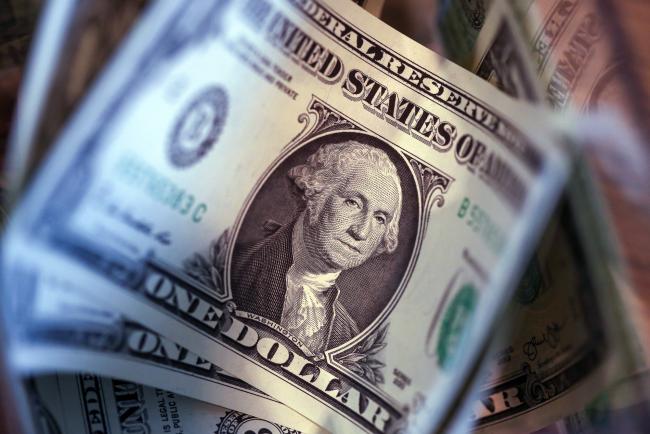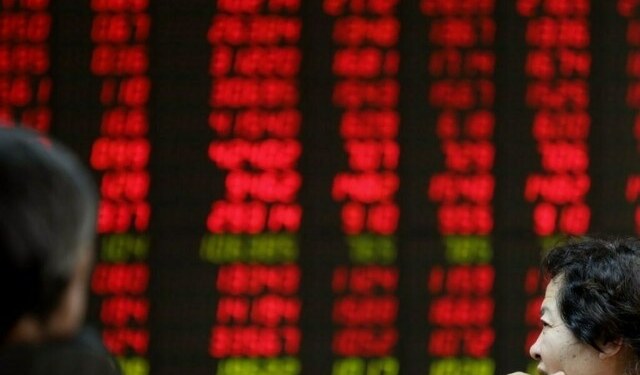 © Bloomberg. A collection of U.S. one dollar bills sit in this arranged photograph in London, U.K., on Friday, Jan. 29, 2016. The International Monetary Fund extolled the potential benefits of virtual currencies and said they warrant a more nuanced regulatory approach, at a time when the future of bitcoin, the most well-known example, is in doubt’s. Bitcoin traded at about $379 on Jan. 20, about a third of its peak in 2013.
© Bloomberg. A collection of U.S. one dollar bills sit in this arranged photograph in London, U.K., on Friday, Jan. 29, 2016. The International Monetary Fund extolled the potential benefits of virtual currencies and said they warrant a more nuanced regulatory approach, at a time when the future of bitcoin, the most well-known example, is in doubt’s. Bitcoin traded at about $379 on Jan. 20, about a third of its peak in 2013.(Bloomberg) — Treasury 10-year yields at 3 percent may fail to entice Japanese investors unless the dollar starts to become more resilient, according to Sumitomo Mitsui Trust Asset Management Co.
“Japanese investors were buying Treasuries when a rise in yields was pushing up the dollar, but that correlation started to break down in December,” said Hideaki Kuriki, Tokyo-based chief fund manager at the company that oversees the equivalent of $89 billion. Their appetite for U.S. bonds has now been limited, and local investors have been unwinding their positions as the dollar-yen’s outlook starts to deteriorate, he said.
Treasury 10-year yields surged to 2.95 percent last week, from as low as 2.01 percent in September, approaching the level of 3 percent for the first time since January 2014. While this would normally make the securities more attractive to investors, those based overseas have had to contend with a dollar that has declined over the period and is forecast by many to keep weakening. The yield was at 2.86 percent Tuesday.
Market participants say part of the reason the dollar-Treasuries correlation has broken down is that the latest yield increase is being driven by concerns over accelerating inflation and a widening U.S. deficit, both of which are undermining the greenback.
“If Japanese investors could be convinced that they could offset the risk of a rise in Treasury yields by gains in the dollar, then they could start investing in unhedged U.S. Treasuries,” Kuriki said. However, they want to see the prospects of the dollar improving before they start investing in Treasuries, he said.
Turning Point
Sompo Japan Nipponkoa Asset Management said an increase in U.S. 10-year yields to 3 percent could still prove a turning point for Japanese buyers.
“Three percent could be a good entry point for investors who will be taking new positions,” said Shinji Hiramatsu, general manager of the fixed-income investment department in Tokyo. “But it could be difficult to buy for people who have already purchased at lower levels when the yield was around 2.50 or 2.60 percent.”
The 3 percent level may convince investors to start buying Treasuries with a currency hedge, but they need to see the market stabilize before they take fresh positions, he said.
Mitsubishi UFJ Kokusai Asset Management said if Japanese longer-maturity yields keep declining then a level of 3 percent for the 10-year Treasury may prove attractive.
“If 20- and 30-year Japanese bond yields continue to fall, while Treasury yields rise and the dollar weakens, then there’s a possibility local investors will flock into unhedged Treasuries,” said Akio Kato, general manager of trading at Mitsubishi UFJ Kokusai Asset in Tokyo.
Japan’s 10-year yield has dropped to 0.045 percent on Monday from as high as 0.095 percent in January. The 20-year yield has fallen to 0.555 percent Tuesday from 0.60 percent.
(Adds Sompo Japan’s comments in seventh paragraph.)
Fusion Media or anyone involved with Fusion Media will not accept any liability for loss or damage as a result of reliance on the information including data, quotes, charts and buy/sell signals contained within this website. Please be fully informed regarding the risks and costs associated with trading the financial markets, it is one of the riskiest investment forms possible.
Source: Investing.com



























